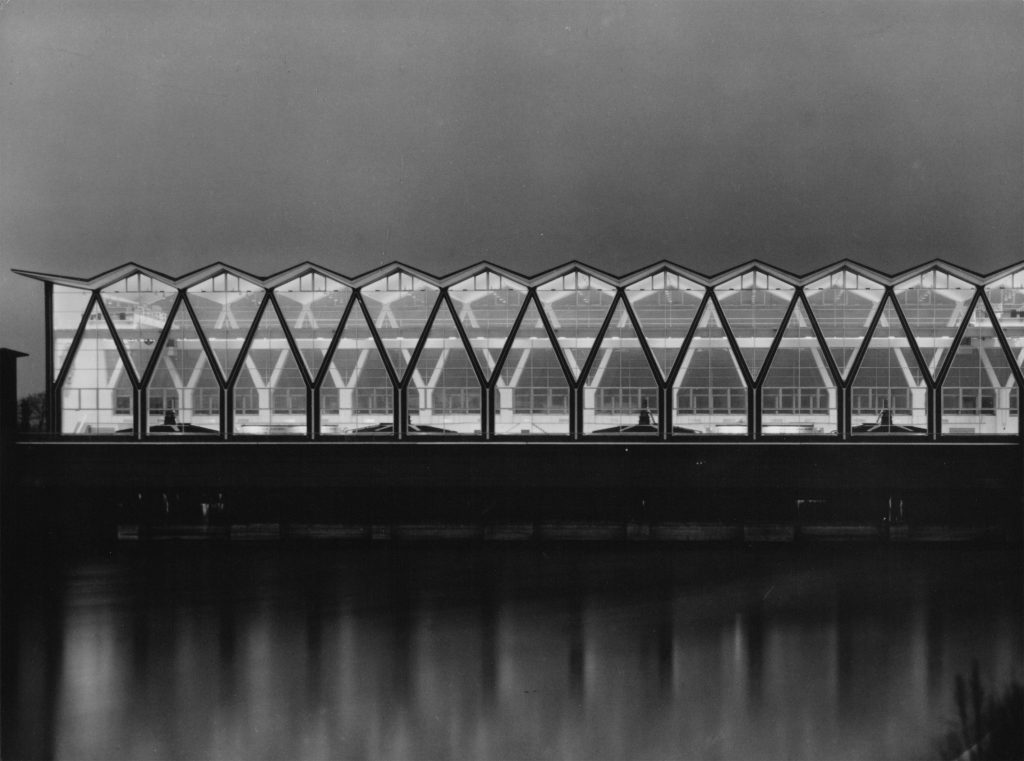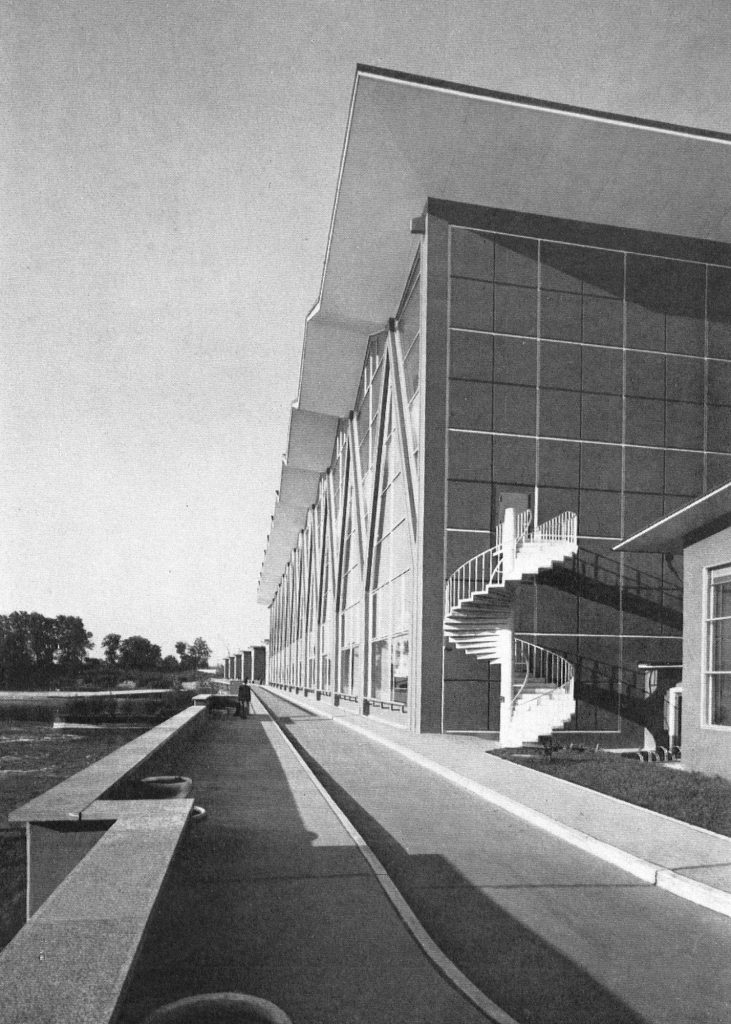In the early to mid-1900s, unstable economic situations in Switzerland and the surrounding area hindered the efforts to supply the requisite electrical demands. During the Second World War the demands increased; in 1942 a concrete plan fell into stable hands. However it was not until 1950, that the project put forth by Hans Hofmann was accepted. On 29 August 1950, the power plant with four turbines was born and became operational in 1954. Today the power station in Birsfelden produces 17% of the total energy needs of the greater Basel region. It is the largest of 12 hydropower plants between the Bodensee (Lake Konstanz) and the Basel border, and the largest in Switzerland. The four turbines annually produce an average of 565 gigawatt hours of energy. There are no environmental risks and it is all renewable energy.
A principios y mediados del siglo pasado, la inestable situación económica de Suiza y sus alrededores dificultó los esfuerzos por abastecer la demanda eléctrica necesaria. Durante la Segunda Guerra Mundial las demandas aumentaron; en 1942 un plan concreto cayó en manos estables. Sin embargo, no fue hasta 1950 cuando se aceptó el proyecto presentado por Hans Hofmann. El 29 de agosto de 1950 nació la central con cuatro turbinas, que entró en funcionamiento en 1954. En la actualidad, la central de Birsfelden produce el 17% de las necesidades energéticas totales de la gran región de Basilea. Es la mayor de las 12 centrales hidroeléctricas situadas entre el Bodensee (lago de Constanza) y la frontera de Basilea, y la mayor de Suiza. Las cuatro turbinas producen anualmente una media de 565 gigavatios hora de energía. No hay riesgos medioambientales y toda la energía es renovable.





The fact that the energy plant could not be built until a lock installation for the water traffic between Basel and Augst was constructed explains, to a certain degree, the delay. The number of ships passing through the locks varies daily, depending on traffic, the weather and the level of the Rhine. The highest number is 49, each within a time frame of 20 minutes. The maximum amount of water required to fill one of the two locks is 32’900 m³. Passage is toll free.
El hecho de que la central energética no pudiera construirse hasta que no se construyera una instalación de esclusas para el tráfico marítimo entre Basilea y Augst explica, en cierta medida, el retraso. El número de barcos que pasan por las esclusas varía diariamente, dependiendo del tráfico, el tiempo y el nivel del Rin. El número más alto es de 49, cada uno en un plazo de 20 minutos. La cantidad máxima de agua necesaria para llenar una de las dos esclusas es de 32’900 m³. El paso es gratuito.
The mechanics of the locks is a continual fascination for the numerous pedestrians and bicyclists passing by; for some it is even a planned destination. Architect Hans Hofmann’s philosophy was to avoid designing a heavy, enclosed structure that would hide the turbines, but rather to introduce a glass edifice offering an open view, blending with Nature’s landscape and producing a serene and cheerful atmosphere. This he accomplished.
La mecánica de las esclusas es una fascinación continua para los numerosos peatones y ciclistas que pasan por allí; para algunos es incluso un destino previsto. La filosofía del arquitecto Hans Hofmann fue evitar el diseño de una estructura pesada y cerrada que ocultara las turbinas, sino introducir un edificio de cristal que ofreciera una vista abierta, mezclándose con el paisaje de la naturaleza y produciendo una atmósfera serena y alegre. Y lo consiguió.
Text via Atlas of Places








VIA:
